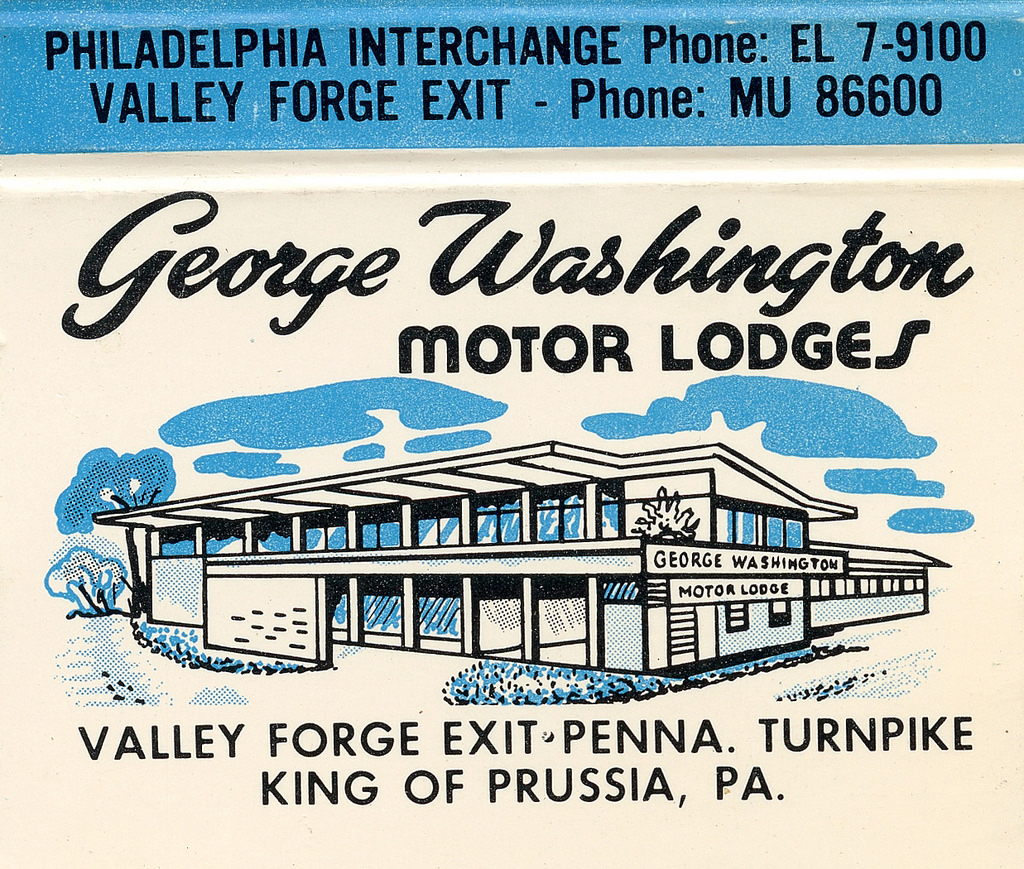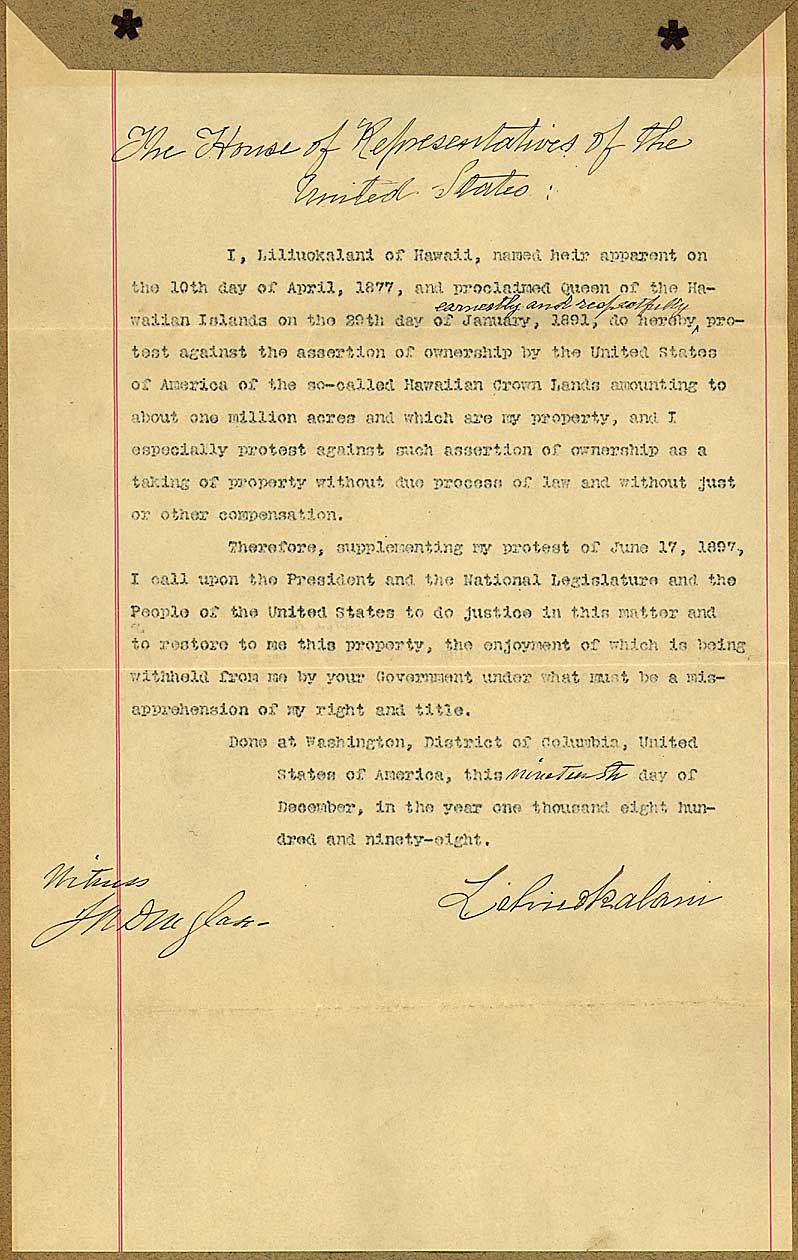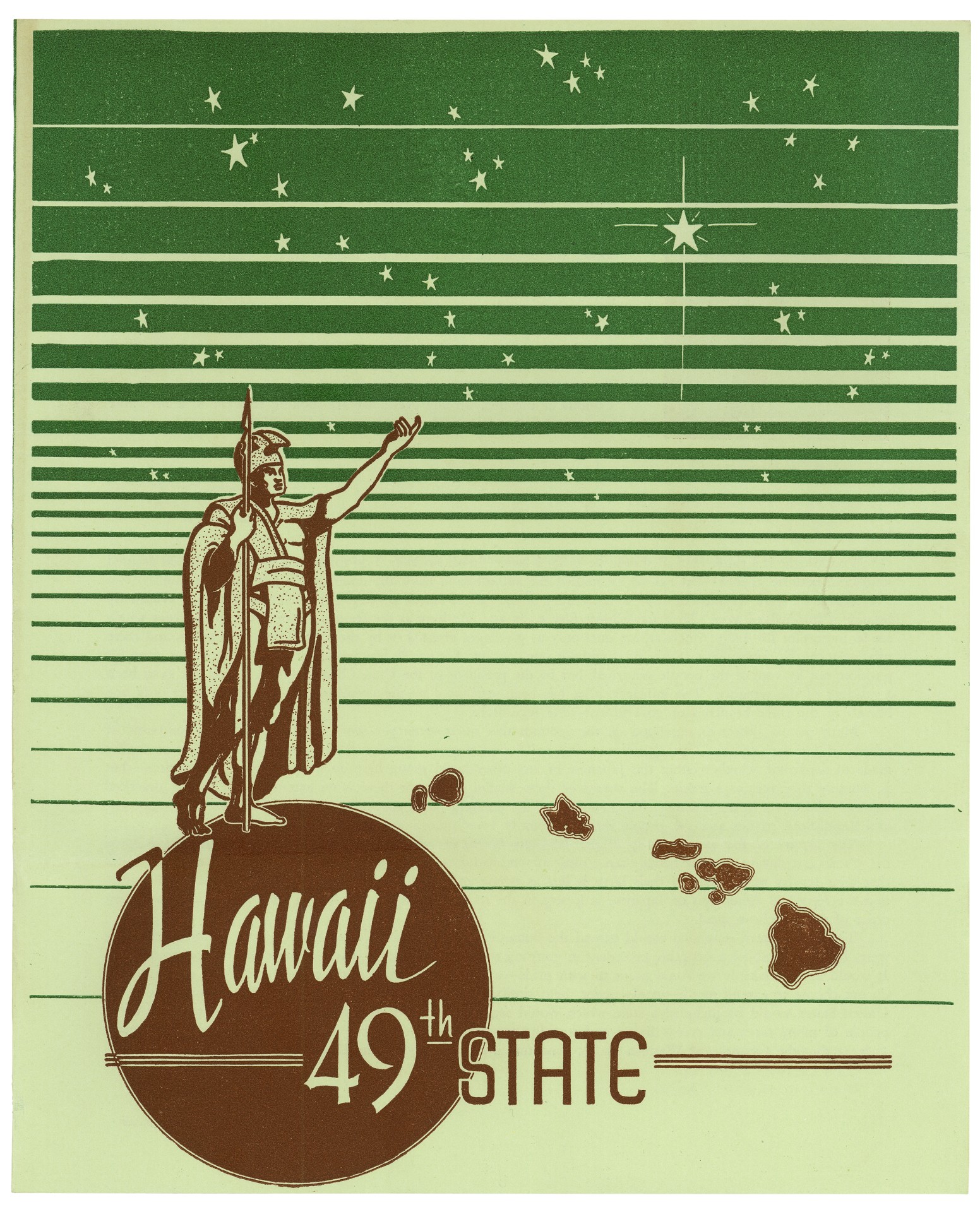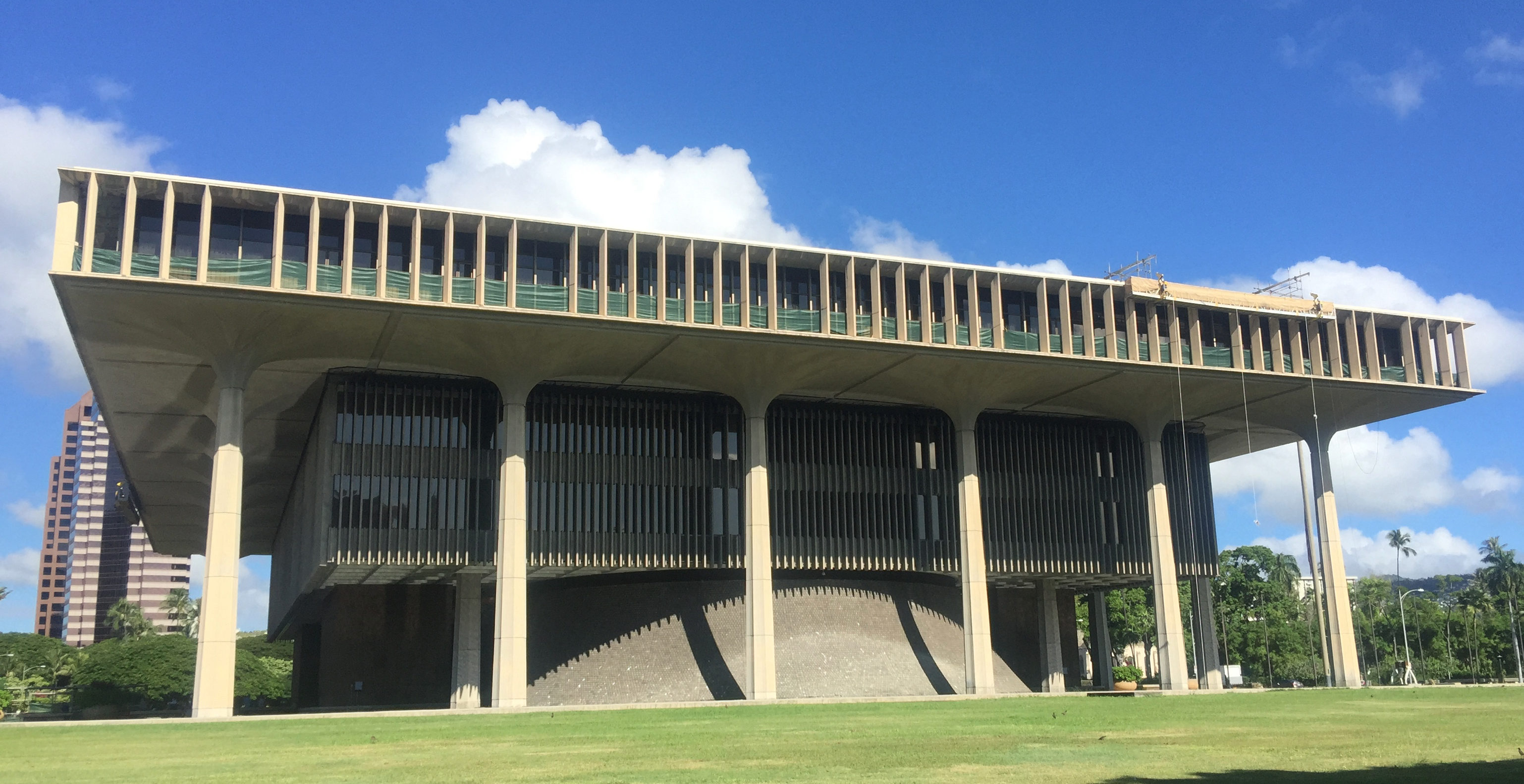The Hawaiian Liberty Bell
“Mom, honk the horn!” a 10-year-old boy calls out excitedly from the back of the station wagon. His mother ignores him. “Honk the horn, Mom!!” the boy repeats, now more animated. His mother continues to ignore him. “Honk the horn, Mom!!!” all three kids, who rarely agree on anything, now chant in unison.
It’s the afternoon of July 30, 1958. Just as the station wagon starts to edge around a long curve on the recently-completed Skyllkill Expressway connecting Philadelphia and Valley Forge, Pennsylvania, the young mother now sees what all the fuss is about.
“Blow your horn. I will ring.” reads a hand-painted sign on the side of a brand new Chevrolet ton-and-a-half flatbed truck. Mounted on the back of the truck is something familiar, something she just drove an hour to see — the Liberty Bell. It’s not every day you see the Liberty Bell on the expressway, so she gives the horn two quick taps. Her children stare out the window, perfectly still, for the first time in as long as she can remember.
The truck driver looks over and smiles, knowing he has the children’s full attention. Keeping a steady pace with the station wagon, the flatbed driver takes his right hand off the wheel and reaches down. It reappears, grasping a rope running through the truck’s back window and attached to the bell’s clapper. Smiling, he thinks of his own family 4,900 miles away as he gives the rope a hardy tug.
The Hawaiian Liberty Bell peals out, rattling the station wagon windows and setting the children into a giddy frenzy. If only they showed this kind of enthusiasm for the real thing. But this is much more fun. What good is a bell you can’t ring? The deep metallic tone cuts through the traffic noise, bouncing off the steep rock cliffs and reverberating to the river below.
As the flatbed pulls ahead of the station wagon, the hand-lettered sign’s full message becomes visible:
“It tolls for thee — Hawaiian Liberty Bell.
Help free our statehood bill.
Write, wire, call your Congressman …
60 years taxation without representation.
Blow your horn. I will ring.”
The man behind the wheel is 35-year-old H. Jackson McBride. A native of Atlanta, Georgia, McBride moved to Honolulu just five years ago and quickly took to the cause. He’s chairman and sole mainland delegate of the Liberty Bell Brigade, a group of 37 Hawaiians formed to promote statehood throughout the country. While some residents have been campaigning to enter the union for the last 60 years, the Hawaiian Liberty Bell is almost as new to the cause, and the territory, as its driver.
In 1950, the U.S. Department of the Treasury commissioned the Paccard Bell Foundry in France to produce 57 identical Liberty Bell replicas as promotional tools for an ambitious effort to sell $ 650 million in Savings Bonds between May 15 and July 4. Impressively, the campaign was pulled off at little cost to the Treasury itself. Eight American metal companies donated raw materials and paid for the bells. Trucks, fuel, advertising, and other hard costs were donated. Sales goals were dialed in down to the county level. Hawaii’s quota was $1,750,000. The bell became the property of the territory upon completion of the drive.

Hawaii’s Liberty Bell tour was much shorter than in other regions. When it finally arrived on June 27, the bell was christened with a six-foot red, white and blue lei and mounted on a Hawaiian National Guard truck. A spirited reception was held at Iolani Palace, where acting Governor Oren Long tolled the bell 49 times. Art Linkletter, then a radio personality, served as master of ceremonies. The keynote speaker, Colonel George F. Unmacht of the Honolulu Chamber of Commerce, brought home the bond drive’s Save for Your Independence theme, reflecting a commonly-held sentiment at the time. “We face no enemy today more insidious than those agents of alien propaganda who seek to poison the minds of American youth with their half-baked tenets of irreligion, communism and pacifism.”
By November, the Hawaiian Liberty Bell sat unhung and unsung under a canvas sheet in a warehouse at Fort Ruger. Colonel Unmacht lobbied for the bell’s display, “If funds are required to place this bell in a prominent location, preferably Iolani Palace, I am sure countless school children would contribute pennies for this purpose.”
And so, on February 9, 1951, the Hawaiian Liberty Bell embarked on a 97-day tour, spending 24 hours at each public and private school on Oahu and many on Maui, Hawaii and Kauai.
In 1953, the bell was placed in the main lobby of the Territorial Judicial Building in Honolulu. Visitors could not resist tolling the bell. The random ringing rattled stenographers and loosened ceiling tiles. There it remained until Jackson McBride had an idea. He would take the bell to the mainland, drive it across the country and ring it on the steps of the nation’s Capitol until his home becomes a state.
On July 17, 1958, the pitchman and the Liberty Bell were reunited in San Francisco. While McBride flew commercial, the bell took a week-long journey on a Matson Navigation Company freighter. The bell was mounted on the back of a brand-new Chevy flatbed and adorned with an aspirational 50-star flag. They were both honored with a parade up Market Street to City Hall. Later that day, McBride and his bell paid a visit to the home of Representative Clair Engle, chairman of the House Committee on Interior and Insular Affairs, the body which just last week granted Alaska statehood and now controls the fate of the now would-be 50th state.
Upon hearing the Liberty Bell ringing at his doorstep, Engle responded, “Tell that McBride fellow to get in his truck and keep driving until his hat floats in the Atlantic.”
In downtown Hollywood, McBride and some morning radio disc jockeys rang the bell for five hours straight, starting at 6 a.m., until police finally shut down the stunt at the request of shell-shocked neighbors.
While driving from Los Angeles to Denver, he rang the bell so hard the sound waves shattered his truck’s back window, broken glass cutting him on the neck.
The highlight of the trip so far came in Independence, Missouri, where Harry S. Truman warmly welcomed him at his presidential library (complete with its own Liberty Bell). The former president gave a ringing endorsement, “You don’t have to convince me. You hightail it to Washington and convince Congress.”
As the sun sets, the weary traveler pulls off the expressway and into the George Washington Motor Lodge parking lot in King of Prussia, Pennsylvania. All McBride can think about is getting his first proper night’s sleep in weeks. On a tight schedule and even tighter budget, he’s been taking catnaps in the cab of his truck where and when he can. This sure beats the night he spent in jail, not under arrest, but at the invitation of the Independence police department, sleeping on a cot in an unused and unlocked cell.

George Washington slept here in 1777. Not at the motor lodge that now bears his name but at a nearby inn. Then, it was a day’s ride on horseback to Philadelphia. Tomorrow it should take 20 minutes if traffic isn’t heavy.
This is a rare moment of luxury on an otherwise low-budget tour. Not unlike the 1950 Savings Bond drive, this tour is made possible through corporate sponsors and volunteer efforts. Aloha Motors donated the truck, Standard Oil and Chevron provided the fuel, and kind Americans have been feeding the Hawaiian along the way. Tollbooth operators have understandably been less flexible. Asking at each toll if the state would provide the Hawaiian Liberty Bell free passage, McBride’s only free pass came from the man at Vicksburg bridge in Mississippi, “Pass with my compliments.” the operator exclaimed, cheerily waving him through.
At 35, Jackson McBride has already had several careers. He first visited and fell in love with Hawaii while serving in the Marine Corps during World War II. After the war, the GI Bill took him to California to study vocals at the LA Conservatory and dramatics at the Hollywood Academy.
Returning home, the Marine earned a reputation as a triple threat in the Atlanta theatre community; singing, dancing and acting his way through shows as varied as Swan Lake, Arsenic and Old Lace and the Drunkard, a rebooted temperance play, where he starred alongside his wife, Sandra. A critic praised how the actor “emoted with sincerity throughout the tearful but childishly simple action of the comedy.”
Working steadily from 1948 to 1952, the high point of his theatrical career came when he earned the starring role in the Atlanta Opera Company’s production of the nautical musical comedy Hit the Deck.
Between theatrical performances, he produced documentaries for government agencies and directed award-winning historical dramas. In 1952 he and Sandra moved to Honolulu, where he planned to study psychology at the University of Hawaii. Instead, they started a family. McBride took a job as an account executive with KAHU radio in Honolulu, then moved on to a public relations position for the Dairyman’s Association, where he was charged with promoting everything but ice cream.
As his head hits the pillow on this hot July night, just a few miles from the field where the Motor Lodge’s namesake spent the brutal winter of 1777-8, McBride’s thoughts drift across the country and across the Pacific; to Sandra, three-year-old Murdock, two-year-old Molly and the youngest McBride, due to arrive on Christmas day.
Hawaii’s Liberty Bell has been his only companion for these last two weeks. Tomorrow they’ll visit the real thing, a fitting preamble to their ultimate performance in DC. Earlier today, he called a Philadelphia city representative to arrange for his public welcome. Certainly, his reception in the birthplace of liberty will rival San Francisco’s. But when McBride parks on Chestnut Street Thursday morning, he’s greeted by only a handful of newspapermen. There is no parade to City Hall, no adoring public, no mayor, no key to the city. Taking it all in stride, McBride joins a tour of the real Liberty Bell.
A few minutes in, he takes over for the tour guide, telling the crowd of his quest for statehood and how he’s recently put a $100 downpayment on his very own Liberty Bell with Whitechapel in London, the original Liberty Bell’s foundry. He hopes to raise the remaining $4,900 for production and shipping from his fellow Hawaiians. The unwitting tourists gain some perspective on Hawaiian history as it’s unfolding, “We are trying to do with the crash of a bell what our forefathers did with the crash of a cannon.”
Hawaii became a U.S. territory in 1893 without bloodshed, but not without contention. Queen Lili’uokalani introduced a new constitution in an attempt to restore royal power and Hawaiian rights lost by her predecessor King Kalākaua. In response, powerful white businessmen and landowners formed the Committee of Safety and overthrew the monarchy, which had reigned for 83 years. Despite the action being ruled illegal by President Grover Cleveland’s Blount Report later that year, the U.S. officially annexed Hawaii in 1898.

In 1937 Congress voted in favor of Hawaiian statehood. Still, the movement stalled four years later after the attack on Pearl Harbor due to unfounded fears about the loyalty of the large percentage of Hawaiians who were of Japanese descent.
Tomorrow is the big show — Mister McBride goes to Washington. It’s raining heavily and unseasonably cold when he arrives at the Capitol. He’s able to peal the bell only three times before Capitol police intercede, directing him to Title 40, section 193-G of the U.S. Code, which empowers them to arrest demonstrators in the interest of preserving the peace. Only delivery trucks are allowed, they tell McBride. “Then I should be allowed. I’m delivering a message,” he responds to deaf ears.
The eternal optimist is unphased by the cold reception in his nation’s capital. He’s heard nothing but support from people all across this country. To everyday Americans, Hawaiian statehood is less a controversy than a foregone conclusion. The only question is: when will Congress act on the will of the people?
Police can chase McBride and his bell from the Capitol steps, but they have no jurisdiction over sound waves. Undaunted, the Hawaiian Liberty Bell and its champion slowly circle the Capitol perimeter, around and around and around; ringing out loud and slow; cutting through the rain and the cold, delivering the call for statehood directly to the steps of the Capitol.
There is more than one Hawaiian champion in DC this day. Governor William Quinn is right now making his case before the 85th U.S. Congress. Whether he or any other legislator heard the toll of the bell is unknown.
McBride’s luck does not get any better in New York the next day. Arriving in the city that never sleeps just before sunrise, about to complete his cross-country journey, he decides to wait before calling the local press. He spends the last money he has on hand — 35 cents — on coffee and rolls. Unable to cash a check and with no money to make a phone call, McBride is now stranded on an island of 1.5 million people. He tramps the streets for 16 hours until remembering the young well-wisher somewhere in middle America who donated their glass Liberty Bell bank to the cause.
In the seclusion of a phone booth in Grand Central Station, fishing around with a nail file — breaking the bank would be sacrilege — McBride pulls out a single dollar after 15 minutes of work. He calls his brother with a request to wire cash.
McBride helps a 10-year-old boy in Denver ring the bell
While the Liberty Bell messenger has accomplished what he’d set out to do, he looks for a more climactic east coast ending. Sunday morning, August 3, McBride arrives in Boston. That afternoon he holds an instant tea party at T-Wharf and is met by some 200 people. The consummate performer knows his crowd and plays them perfectly, “The patriots originally held a tea party to protest taxation without representation, and that is just what we are protesting today in Hawaii. We cannot elect anyone and have no voice in Congress.”
On each side of the bell’s yoke, he’s written in large chalk letters, “No more promises.” and “Statehood now.”
McBride tosses instant tea bags into Boston harbor, proclaiming, “This time I used instant tea. If we could have it, I would like instant statehood.” Next, he ceremoniously tosses his Hawaiian coconut hat into the harbor, granting Representative Clair Engle his wish.
All that’s left to do now is drive back across the country and get home to his family. He makes it to the west coast in half the time it took him to reach the east coast, passing through Charlotte, Atlanta, Dallas, Abilene and Fort Worth. Arriving in El Paso, McBride can smell Hawaii and drives 800 miles to Los Angeles in less than 24 hours.
All told, the Hawaiian Liberty Bell tour logged 8,250 miles on the Chevy flatbed and visited 15 states and DC. McBride claims to have met at least 2,000 people and rung the bell 50,000 times, heard by 10 million mainlanders. Without accounting for sleep, that’s one toll of the bell every 72 seconds. He spent his entire $1,000 budget, plus some of his own money, and lost 20 pounds.

Notwithstanding the cold shoulder in DC, McBride was met with nothing but support from fellow Americans across the mainland.
The 85th Congress kicked the statehood can down the road. Clair Engle’s committee filed their report the day before Congress adjourned. The report acknowledged the overwhelming public support and stated the admission of Hawaii’s half-million residents, 75% of Asiatic origin, would “constitute a singular achievement in diplomacy.” The minority report, submitted by three Democrats and two Republicans, opposed Hawaiian statehood due to an alleged atmosphere of “tolerance, appeasement and encouragement for communism.”
On March 18, 1959, seven months after his tour, Congress passed the Hawaii Admission Act. Offered the binary choice between remaining a territory and becoming a state, the majority of Hawaiians preferred neither option, with only 35% of residents choosing to vote. 93% of those who voted were in favor of statehood. On August 21, 1959, President Eisenhower signed the official proclamation making Hawaii the 50th state. On July 4, 1960, the 50-star flag, like the one McBride flew a year earlier, became the official U.S. flag.
It’s easy to look back on the Hawaiian Liberty Bell trek with the benefit of time and conclude it had no demonstrable effect on Congress. Fifty states sounds much better than 49, and the time was politically right for Hawaiian statehood.
For almost the entirety of the effort, Hawaii campaigned not to be the 50th state but the 49th. It was generally thought Hawaii’s claim to statehood was stronger than Alaska’s from an economic, geographic and historical perspective. When in 1959, the Democratic majority in Congress granted statehood to Democratic-leaning Alaska, it sparked a renewed interest in admitting the then Republican-leaning Hawaii to restore political balance.
It’s less important whether McBride’s journey tipped the scales in favor of statehood than that he made the journey at all. The idea of one American, armed with nothing but a ton of bronze and the goodwill of his fellow citizens, carrying the message of the people 5,000 miles and back again is powerful enough.
Jackson McBride returned to Honolulu and his family and his PR job. Later, he’d reflect on this time as both the most rewarding and the most trying time of his life.
Fittingly, the Hawaiian Liberty Bell played a starring role in statehood celebrations. On March 13, 1959, it was transported to Honolulu Stadium for a massive celebration. Offshore, Naval destroyers provided a pyrotechnic show. Teenagers in convertibles paraded down the street, honking horns and playing ukeleles. At the Hotel Royal Hawaiian, all-you-can-drink champagne flowed freely. Not to be outdone, the pineapple companies gave 14 tons of pineapple juice to celebrants. McBride’s Dairyman’s Association, at least for this one day, could not compete.
At Palolo Elementary in Wahiawa, the principal was overcome with emotion, telling her 15,000 students what statehood means to them, “Someday, one of you may be president.”
 Queen Lili’uokalani statue, installed in 1982
Queen Lili’uokalani statue, installed in 1982
Less than a year after it toured the states, the Hawaiian Liberty Bell was back in storage. It was made public only for special occasions, like Citizenship Day in 1966. In 1975, it was moved to a courtyard in front of the federal building in downtown Honolulu. Two years later, funding was approved to build a permanent home base for the bell. By 1980, the bell’s permanent location was called into question. Proponents of a newly-commissioned statue of Queen Lili’uokalani determined the Queen’s ideal location was between the Capitol and Iolani Palace, symbolically bridging the gap between the old and new Hawaii. Only the Liberty Bell stood in her way. After some legislative infighting and a dustup in the local papers, the Queen was installed in her rightful place, and the bell was moved to the opposite side of the Capitol, where it can be seen today.

The Hawaii State Capitol, built in 1969


How can I print this story. I was born near pearl harbor on December 7th 1941 and remember when the bell was brought to our school. Very interesting story
Juliette,
I’m glad you enjoy the story. I emailed you a PDF that you can print out if you’d like. It’s exciting to hear from someone who saw the bell on tour. Please share any other thoughts or memories of the occasion. Were they actively raising money? Did you contribute?
I absolutely love this story – Mahalo – I just stumbled on my first replica liberty bell in WV, then we saw another in Nashville last night and will see the one in Independence tomorrow. I lived in Hawaii many years and have driven past this countless times without realizing it. Next time I go home, I will see this one as well.
Thank you for writing this article. Jackson McBride is my biological father. Born in 1969, my entire childhood, I fantasized about who my father might be. Random grown men I would observe inadvertently would lead to my wondering…could he be my father? In 1996, when discs loaded with a database of all US phone numbers, my then parter called McBrides listed and in three calls I was speaking with my brother Brigham(BJ) who clearly remembered the months my mother had interned as a nanny for Jackson’s then five children. In a matter of days, Jackson and I spoke. Speaking with your natural father for the first time in your life at 28 becomes a sticky memory. Jackson led a life of eccentricity. In the past few years, I’ve developed a close rapport with Murdoch and a few of Jackson’s offspring (not born/mentioned in this article). I share this to state, for the first time in my life, I can feel a shred of pride in my lineage. Jackson impacted the world as best he could.
J.R.,
Thanks for reaching out. I’m so glad to hear from you. I heard from your brother Murdoch as well.
Jackson seems to share common threads with other folks I’ve discovered through this project: they all understood the symbolic power of the Liberty Bell and used it masterfully, were PR pros (in McBride’s case, literally). They crafted the bell’s narrative with themselves cast as the humble hero, were prone to exaggeration and their yarns were rarely scrutinized. Now, with the benefit of time, you get the sense there were, darker, stranger, more secret things beneath the surface.
I’m guessing since you searched for folks with the McBride name, you had some reason to suspect he was your natural father. (?) I’d love to hear any other thoughts you have on the matter. Have you seen the Hawaii bell or any other Liberty Bell Replicas? Was/is your mother alive during your journey to find McBride? How did she feel about it?
Thanks again for commenting and thanks in advance for anything else you’d like to share.
My name is Murdoch McBride and my late father, Jackson, is the character at the center of your Hawaiian Statehood story. He passed away on July 17, 2005 in Scottsdale, Arizona at the age of 82. Throughout his life, the Hawaiian Statehood campaign remained a highlight for him. And he would have loved your thoughtful and well-researched piece.
I remember the day my mother and I looked out the window from our home on Halemaumau Street as she implored me to remember the truck with the bell, which my dad had parked on the far shoulder of Kalaniana’ole Highway.
It was important, she said.
I must have taken that to heart because it remains one of my earliest memories.
Ringing the bell always meant something…it was powerful and quite loud my dad said. The “Betsy Ross’d” first 50-star flag was also a huge element to the trip…flag and bell were inseparable to the campaign. The Truman Library has excellent photos of Former President Truman and my father proudly hoisting the flag on the truck with the bell. Others rightfully get credit for being the first to fly the 50-star flag…decorated vets, I was once told…but my dad spent decades quietly claiming the same honor based on the campaign he ran.
After years of hearing this story from
my father and then interpreting it myself for friends and colleagues over the years, it is surprising to read such a detailed account of the trip.
Thank you, and Aloha!
Murdoch McBride
Mr. McBride,
I’m so pleased to get your email. I’ve heard from relatives of a few of the folks I’ve written about and it’s my favorite part of this project.
I heard from J.R. as well. I’m glad your family enjoyed the piece. Your father seemed like quite a character and was adept at drumming up press coverage. If you’d like, I can send you the newspaper clippings from my research. I took some creative liberties, guessing what he might have been feeling and imagining the opening scene of him driving down the expressway ringing the bell.
Not surprisingly, the press coverage I find on characters like your father reveals little to nothing about the women who supported these men as they carried out their Liberty Bell adventures.
I’d love to know more about how your mother felt about your father’s adventures and how she managed.
Do you have any photos of the family with the bell? And would you be willing to share any further insight that might inform a more in-depth piece on your dad? And, last, may I publish what you’ve already shared and any other info you provide?
Thanks again for reaching out. You and your brother made my day!
Aloha,